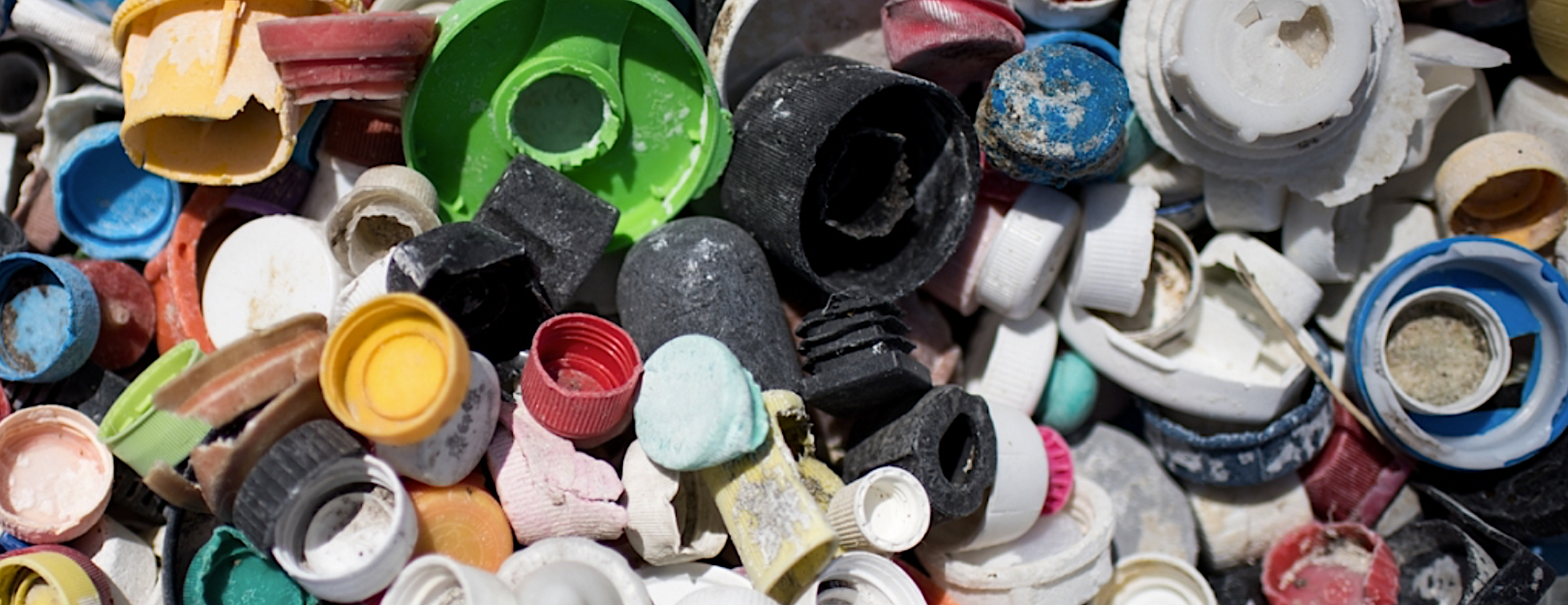Ecosystems Solutions
Reducing the Nutrient Load:
How an Alternative Method of Wastewater Treatment Could Help the Tar-Pamlico Recover
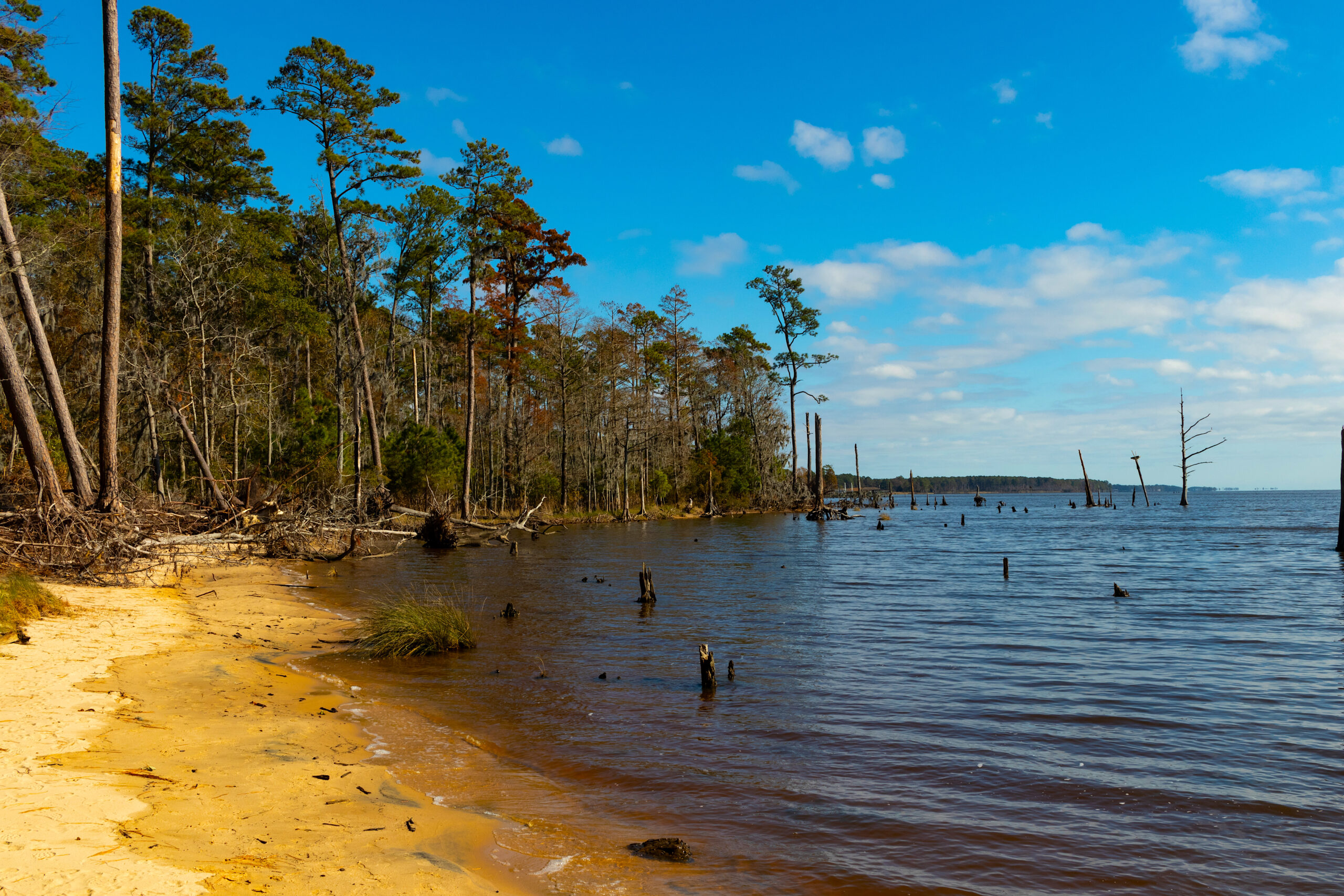
Are hybrid constructed wetlands part of the solution for North Carolina’s impaired watersheds?
On a warm, sunny day in August 2019, three dogs went for a swim in a pond in Wilmington, North Carolina. A few hours later, the dogs had died from exposure to large amounts of toxins from bacteria present in the pond.
Excess nutrients, such as nitrogen and phosphorous, are flowing into natural water systems. These nutrients are the perfect fuel for the toxin-producing bacteria that grow in stagnant and slow-moving waters.
Nitrogen and phosphorous are nutrients present in human waste, which municipal plants deliver to wastewater treatment plants. The municipal plant then processes, filters, and disinfects the water before releasing it back into natural water systems. However, municipal plants are not always able to remove enough nitrogen and phosphorous to prevent “nutrient loading” of watersheds.
Factors such as a growing population and an aging municipal plant infrastructure contribute to increased amounts of nitrogen and phosphorous and the subsequent potential increase in the production of toxic bacteria in fresh waters.
Natasha Bell, an ecological engineer at Virginia Tech, is currently conducting research on a new supplemental method that can aid municipal plants in the removal of phosphorous and nitrogen.
“The Tar-Pamlico watershed is already considered ‘impaired’ due to nitrogen and phosphorous loading,” says Bell, who adds that these conditions aren’t atypical for our region. “There are hundreds of bodies of water on NC’s list of impaired waters. Some of these are considered impaired due to excess nutrient loading. We can address the issue of excess nutrient loading by finding more efficient, sustainable, and cost-effective wastewater treatment options.”

Nitrogen, Phosphorous, and Harmful Algal Blooms
Cyanobacteria, also called blue-green algae, can cause harmful algal blooms during warm seasons. Blooms occur naturally, but nutrient-producing human activities and associated climate change have exacerbated the scope and effects of these blooms. This was the likely cause of death of the three dogs who took a swim in 2019.
Harmful algal blooms are not only toxic to house pets but can also cause fish kills, respiratory and skin irritation for humans, and contamination of groundwater systems that supply drinking water.
The continued occurrence of harmful algal blooms also results in a decrease in the plant and animal biodiversity of the affected areas, which has a severe impact on the marine and mammal life living in and around these waters.
“Harmful algal blooms also lower property value,” says Bell. The increased frequency of harmful algal blooms can negatively affect recreational activities, such as swimming, fishing, and water sports.
Nutrients and Drinking Water
Excess nitrogen and phosphorous also can affect the integrity of drinking water. Groundwater sources are not sealed from agriculture runoff, wastewater from leaky septic tanks, or cyanobacteria-contaminated waters. This can lead to water with a bad odor or taste — at a minimum — or even water that can be harmful to human health.
Too much nitrogen in drinking water, for instance, reduces the amount of oxygen in the bloodstream, which can have harmful effects on the development of newborns and infants. “Blue Baby Syndrome” occurs when infants eat or drink too many nitrates, a form of nitrogen present in treated wastewaters, and this can lead to brain cell death, cerebral palsy, and epilepsy.
“There are remediation processes already in place to decrease the amount of nitrogen and phosphorous in wastewater at municipal plants,” says Bell. But, she adds, “with increases in population and more frequent and severe rain events, the aging wastewater treatment infrastructure sometimes cannot meet the safe levels of nitrogen and phosphorous allowed in receiving waters.”
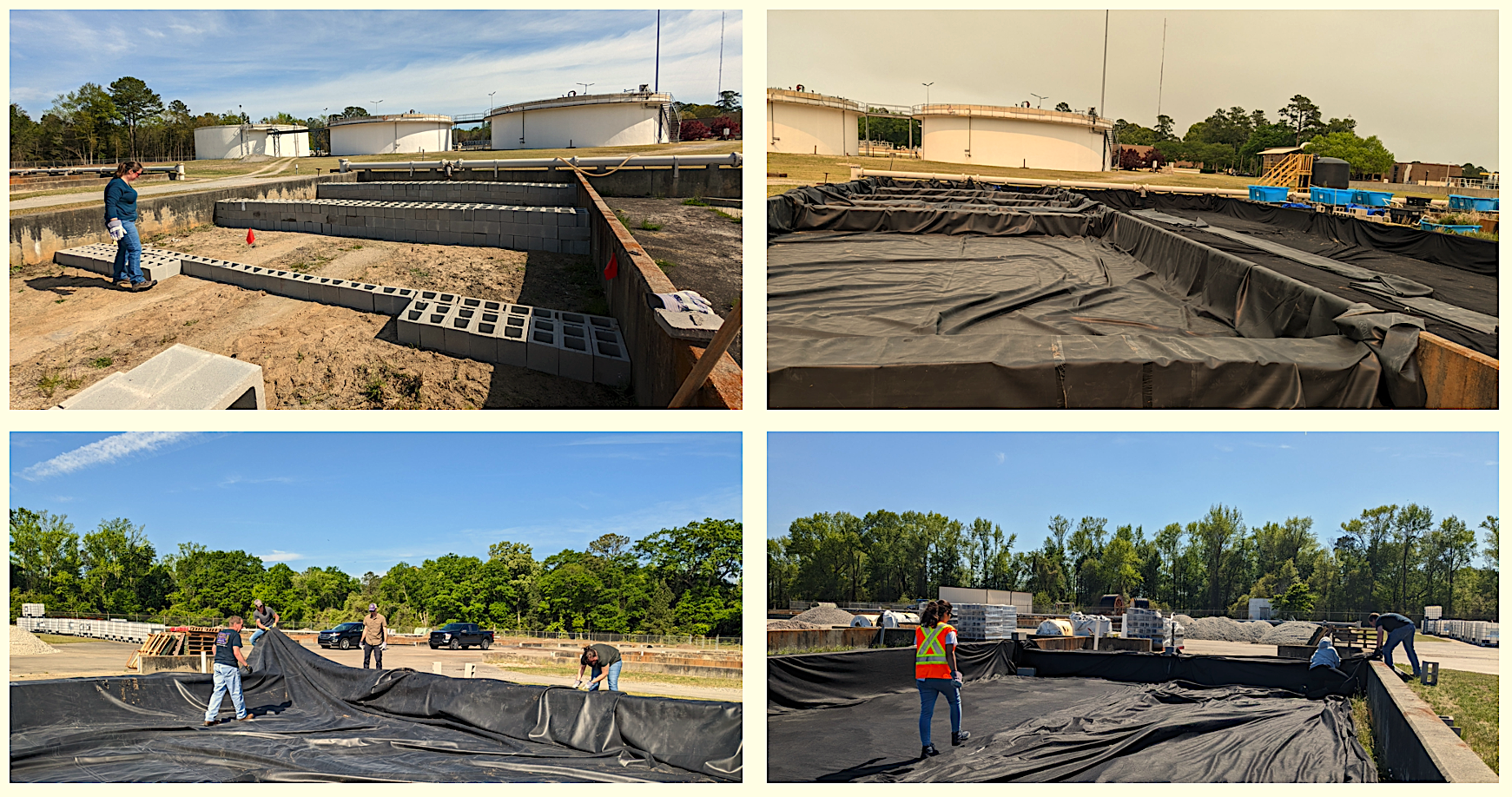
Case Study: The Greenville Utilities Commission Wastewater Treatment Plant
At municipal wastewater treatment plants like the Greenville Utilities Commission’s, the incoming wastewater — called influent — goes through a series of filters that removes solid debris and organic material. The filtered water then undergoes a process called biological nutrient removal, in which “good” bacteria consume nitrogen and phosphorous in the water.
The final step is to disinfect the water using ultraviolet light, and the outgoing water — called effluent —releases back into natural water supplies.
The Greenville plant, which releases wastewater into the Tar-Pamlico River basin, has used biological nutrient removal successfully in the past, but more frequent and extreme climate events make this process harder to manage.
“The bacteria we use are living organisms,” says Jason Manning, superintendent at the plant. “They respond differently in the summer and winter months. And increased hydraulic demand from storms disrupt the natural biological process.”
In addition, the surrounding population and demand for wastewater services is increasing, while the size and capacity of the plant remains the same. This increase in population, in turn, brings an increase in the concentration of pollutants and nutrients in influent.
“As a result,” says Manning, “the plant needs to become more efficient every year.”
Accordingly, Bell and Manning saw a need to develop a new system that allows for removal of more nitrogen and phosphorous.
Watch a video about the plant here.
A Supplemental Method for Wastewater Treatment
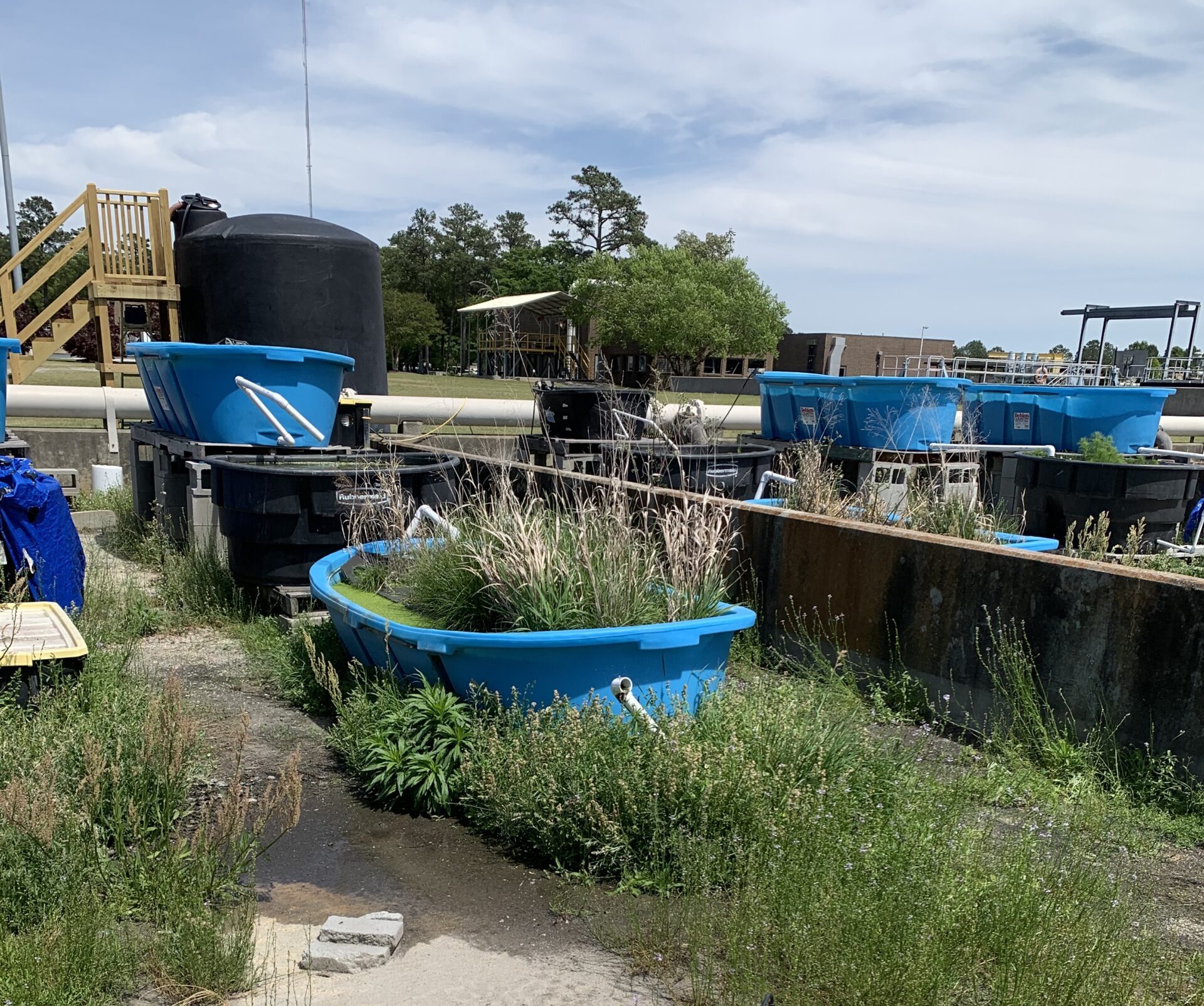
After receiving a Community Collaborative Research Grant, Bell, Manning, and a team of undergraduate and graduate students implemented a pilot filtration system at the Greenville Utilities Commission Wastewater Treatment Plant called a “hybrid constructed wetland.”
A hybrid constructed wetland uses several different biological and physical processes to remove nitrogen, phosphorus, and pathogens from the effluent.
Students tested filtering materials, such as recycled concrete, zeolite, gravel, biochar, and woodchips. From these experiments, the team found that zeolite was 95% effective at removing ammonium — the most common form of nitrogen in waste — from wastewater. Recycled concrete was 35% effective at removing phosphate.
“Recycled concrete is a cheap and abundant waste product,” says Bell. “Finding a product that is both cheap and effective is rare.”
Implementing hybrid constructed wetlands at municipal plants would introduce a cyclical aspect to wastewater treatment.
“The effluent from municipal plants may be filtered through the hybrid constructed wetland, removing more nitrogen and phosphorus,” says Manning. “This treated water would then be reintroduced to the receiving stream in a much cleaner state.”
In turn a diluted flow of nutrients into the municipal plant would reduce the overall burden on the municipal plant itself, which would significantly increase the efficiency and effectiveness of nutrient removal.
New Hybrid Constructed Wetlands
Thanks to the results from their pilot filtration system, Bell and Manning implemented larger-scale hybrid constructed wetlands this past spring. They collaborated with East Carolina University researchers Linda D’Anna, Randall Etheridge, Erin Field, Eli Hvastkovs, Jonathan Lee, and John Hoben, as well as Steven Hall, the director of the Marine Aquaculture Research Center at NC State University, and Matthew Campbell, president of Natrx Adaptive Infrastructure in Raleigh. A UNC Research Opportunities Initiative ROI grant supported this phase of their work.
These new hybrid constructed wetlands include the added component of “floating treatment wetlands,” which incorporate another method of removing nutrients.
“You have these floating rafts that you stick aquatic plants into,” says Bell. “The roots extend into the water column and take up nitrogen and phosphorous into the plant itself. There are also microbes on the roots doing some nutrient processing here.”
Floating treatment wetlands work wherever the water is relatively stable and calm, such as in ponds, small streams, slow rivers, and lakes.
In effect, treatment wetlands might be able to retrofit existing wastewater treatment systems by removing excess nitrogen and phosphorous from effluent downstream. Recapturing and recycling nitrogen and phosphorous also introduces potential sustainability to hybrid constructed wetlands.
Bell and her colleagues are actively searching for methods to reuse these nutrients in agriculture and other industries. Phosphorous recapture is of special interest, according to Bell. “Phosphorous is not an unlimited resource. It is mined, and we will eventually run out.”
Recapturing and recycling nutrients for use in agriculture is a fairly new direction in the field, and Bell and her colleagues are at the forefront of it. “We’re planning to further explore beneficial reuse potential of adsorptive materials,” which attract gasses or solutions to their surfaces, “such as concrete and zeolite.”
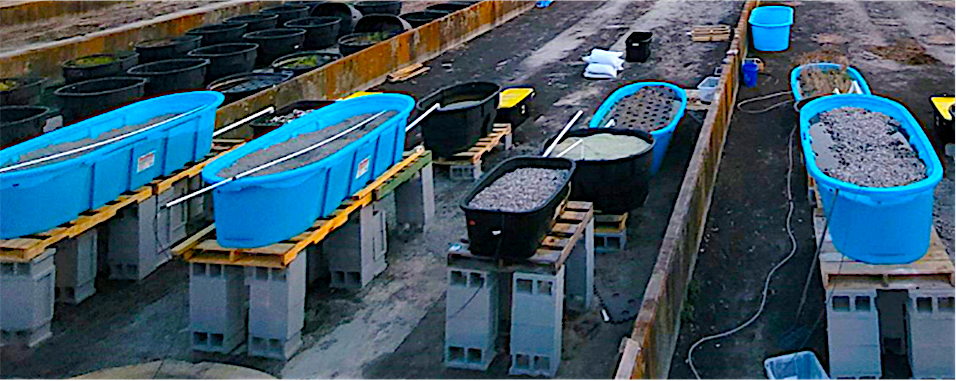
Wastewater and Composting
Greenville Utilities Commission Wastewater Treatment Plant has a composting system that uses a combination of biological processes and natural decomposition to recycle waste.
Bacteria and microorganisms, or “biomass,” break down waste and pollutants in wastewater into carbon dioxide, water, and nitrogen gas, and additional biomass. Once the microorganisms have cleaned the water, they are considered biosolids. These biosolids are transported to the McGill Environmental facility, where grass clippings and other lawn and yard waste are mixed in and composted with the biosolids. The result is topsoil-like material for use in agriculture and horticulture.
“The composted Biosolids are an excellent source of nutrients (nitrogen and phosphorus) that are very beneficial for plant life,” says Manning. “This is also great for the environment in that carbon, nitrogen and phosphorous are beneficially recycled and not returned back to the receiving stream.”
This system has been in place since 2005 and processes about 48 wet tons of waste a day.
“The proposed hybrid constructed wetlands in combination with biosolids recycling will greatly reduce the potential downstream impacts nutrients could have in our estuary,” Manning says.
Aquaculture and Hybrid Constructed Wetlands
Some methods for treating wastewater are translatable for treating salt-water environments in aquaculture. Aquaculture systems deal with an overload of nitrogen that comes from feed and fish waste in the water.
“The nutrients in aquaculture systems are already very dilute,” says Hall. “Using salt-water-tolerant aquatic plants can help alleviate some of this concentration.”
Wastewater treatment plants have to process whatever waste that comes their way, whereas aqua-culturalists have more control.
“With animals we can change the feeds to be more sustainable,” says Hall. “We can set up feeds in such a way so that we biologically enhance the ability of the animal itself to absorb these nutrients and reduce waste.”
Likewise, controlling the quality and type of feed for fish can affect bacteria in the water.
“We’re trying to culture good bacteria,” says Hall. “Not all algae is bad, and mixing good microbes with good algae adds another layer of nutrient removal.”
Hall says the technology that emerges from research on hybrid constructed wetlands will have applications across multiple sectors.
“Aquaculture is the fastest growing protein sector on the planet,” adds Hall. “The technology that comes out of this research can have lasting applications and benefits for North Carolina’s aquaculture industry.”
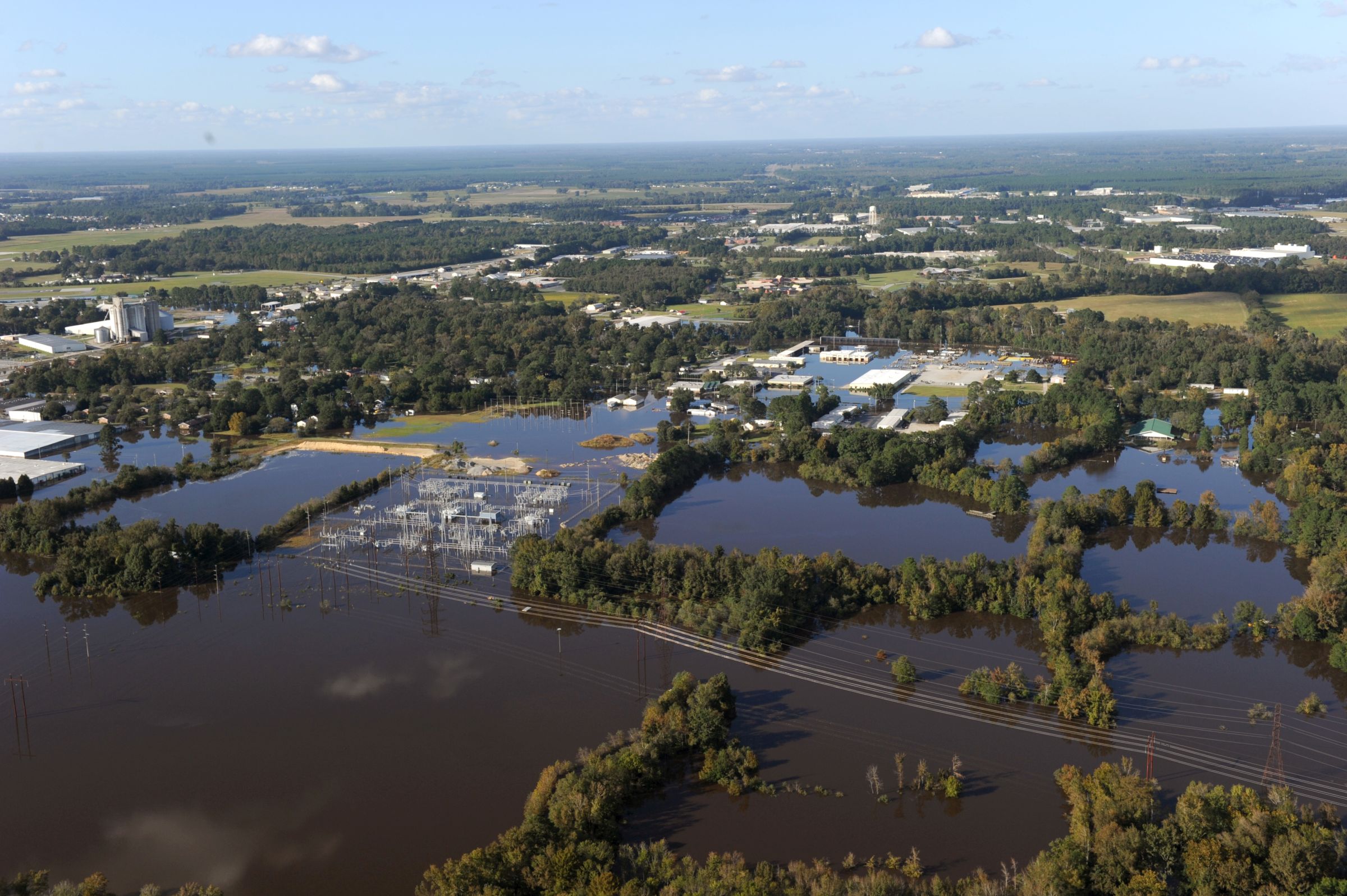
A Flourishing Tar-Pamlico River Basin
“The next step in hybrid constructed wetland research is the establishment of best management practices,” explains Hall. “From here, we can scale up the wetlands for commercial use and widescale implementation.”
The integration of hybrid constructed wetlands into current wastewater treatment practices could take a few years. Once implemented, however, watersheds and surrounding ecosystems and communities will see affects that extend far into the future.
“We’re in it for the long game, not the short win,” says Manning. “All of our treatment goals are aimed at the long-term health of the estuary. We may not see immediate improvement of impaired watersheds, but in a decade or so, the Tar-Pamlico will flourish once again.”
MORE
- about Community Collaborative Research Grants
- about harmful algal blooms
- about on-site wastewater treatment at the NC coast
- the EPA’s national nutrient strategy
- about nutrient removal
- the Greenville Utilities Commission Wastewater Treatment Plant
Alexa Cortes, associate editor of Coastwatch, is completing her master’s degree this spring at NC State University in technical communication.
- Categories:


